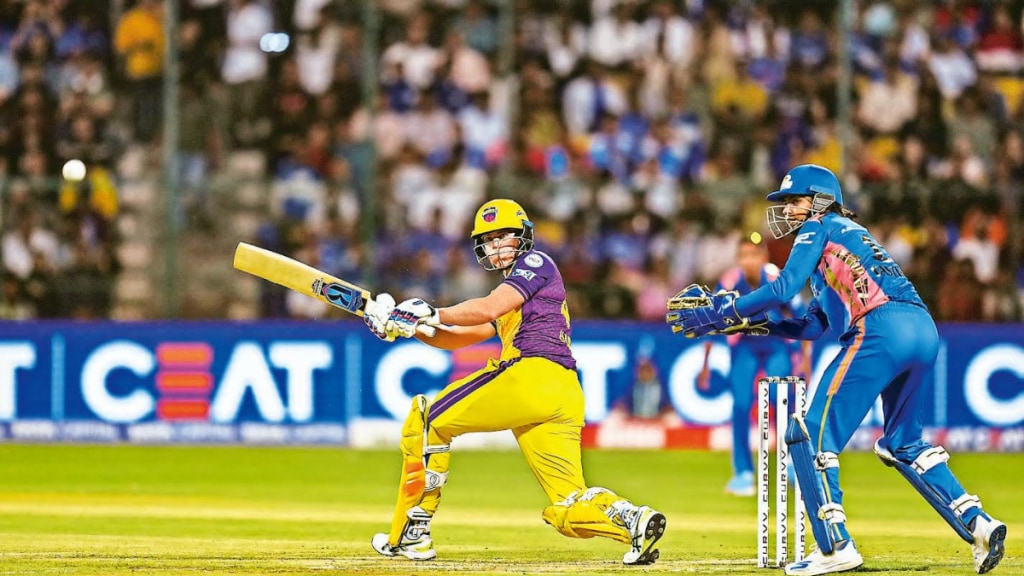They say the third time’s a charm and that seems to be true for the Women’s Premier League (WPL), whose third season is underway. The league’s opening game between Royal Challengers Bangalore and Gujarat Giants saw record TV viewership of 30 million, making it the most-watched league stage game ever, as per BCCI secretary Jay Shah’s post on X. The opening game numbers mark a 150% rise in TV viewership and a 70% growth in digital viewership on JioHotstar compared with last season. Clearly, the WPL is no longer a sideshow. As per JioStar, connected TV (CTV) viewership has seen two-fold growth, while linear TV recorded 142% growth in viewership over 2024.
Industry insiders say the WPL collected ad revenue of `100-110 crore in its first edition but saw a slight drop to `85-90 crore last year. This year, depending on the quality of the cricket and viewership growth, experts reckon that ad revenue may grow around 20% to reach `110 crore, pretty much the 2023 season revenue mark.
The big question is, will these numbers attract more advertiser dollars than previous seasons?
There has already been an uptick in advertiser spending this season compared to the last two editions, observes Pankaj Malani, SVP for revenue, Only Much Louder (OML). He estimates that brands are spending 15-20% more than they did last year, and this will only increase with growing viewership.
JioStar has announced 10 sponsors across sectors for the league, including State Bank of India, Himalaya No.1 Facewash, Tata Capital, AMFI, Amul and Tata Motors, among others. WPL teams too have attracted sponsors such as Tanishq, Kay Beauty and LoveChild by Masaba, which have not really been associated with cricket previously.
While viewership is one of the factors driving up advertiser interest, there are other reasons drawing brands. “Marketing by the broadcaster, with hoardings and digital ads, has really upped the ante to drive accelerated viewership. Further, the games are being held in cities like Baroda and Lucknow, ensuring that the reach is spread across different locations. Individual team-led campaigns, and their focus on building social media content has also really helped develop a larger audience base,” points out Malani. OML manages the social media mandate for the Mumbai Indians WPL team.
In its debut season, WPL saw over 50 brands advertise, as per a TAM Sports report. That number rose to 70 last season and analysts expect many more to join the party this year. “Brands view WPL as a cost-effective gateway into cricket advertising, especially for those who seek strong visibility without the premium costs of the IPL (Indian Premier League),” notes Alka Vij, director at Hashtag Orange. The fact that Jio and Star have joined forces is also a big plus, says Sajal Gupta, CEO of Kaios Marketing. However, one of the factors playing spoilsport this season is the ongoing ICC men’s Champions Trophy. “Viewership might be split as the tournament progresses because even match timings are clashing. Advertiser interest should grow on the back of record viewership, but I doubt that we will see significant ad revenue growth if viewership is split,” says Gupta. He suggests that the WPL could consider a different scheduling calendar next season, perhaps alongside the IPL so that the women’s league can benefit from the IPL hype.
According to Sandeep Goyal, chairman at Rediffusion, aside from the Champions Trophy scheduling clash, the upcoming IPL might also impact ad spending during the women’s league. “One problem is that companies like HUL are advertising brands like Boost during the tournament instead of women-centric brands. If they had to advertise women-centric brands, then the WPL spends would be taken out of the GEC ad budgets. Since that is not happening, the WPL is fighting for a part of the cricket budgets and against Champions Trophy and IPL, which is difficult despite dramatically lower rates,” observes Goyal.
Regardless of how much the WPL rakes in by way of ad revenue, the big positive takeaway has been that women’s cricket is finally garnering more viewer interest than ever before, remarks Ashish Bhasin, founder of The Bhasin Consulting Group. He maintains that advertising will always follow eyeballs and advertiser interest will grow as long as viewership continues to surge. Women’s cricket needs to be promoted more and given prime time slots, recommends Bhasin.

